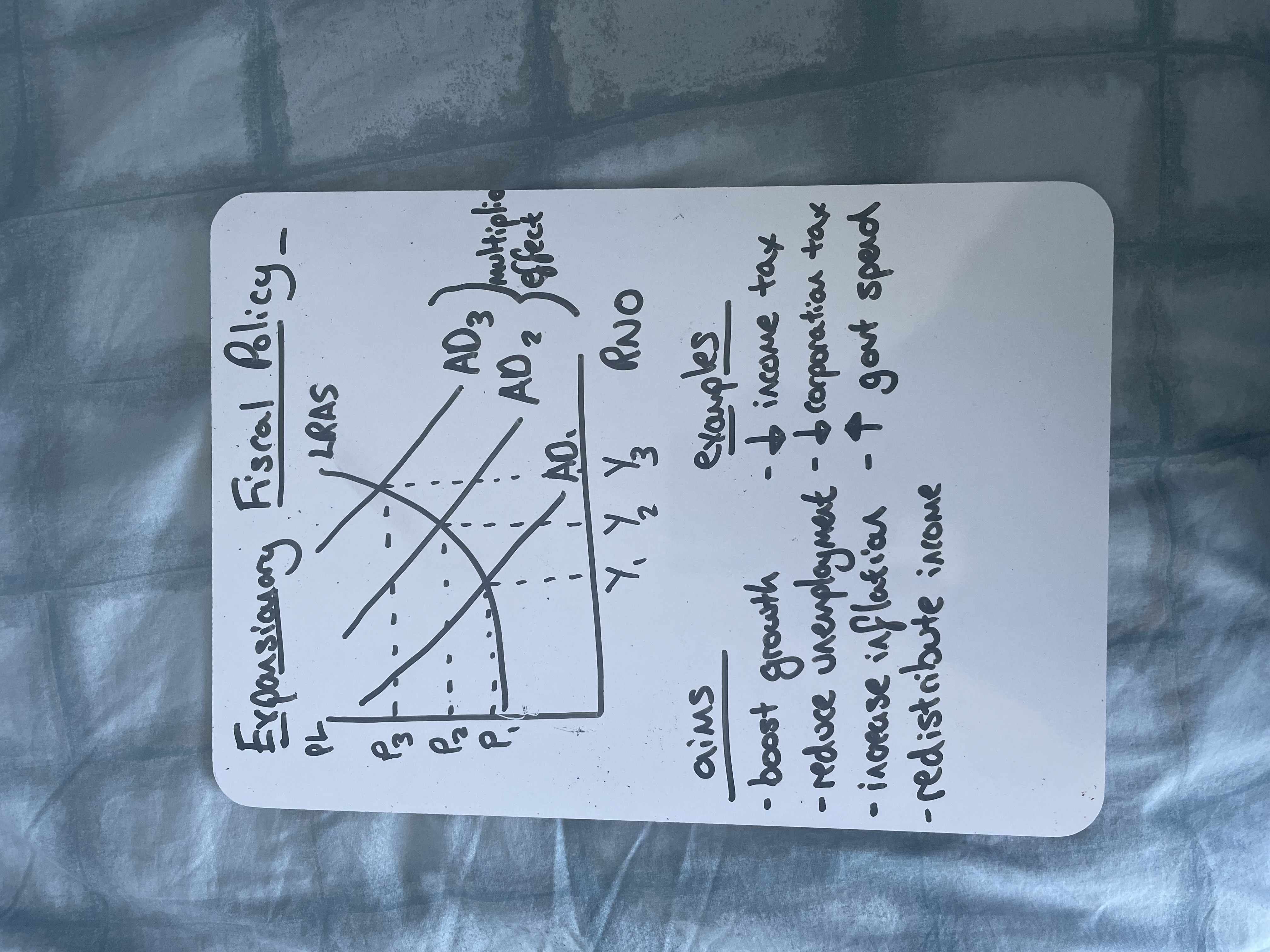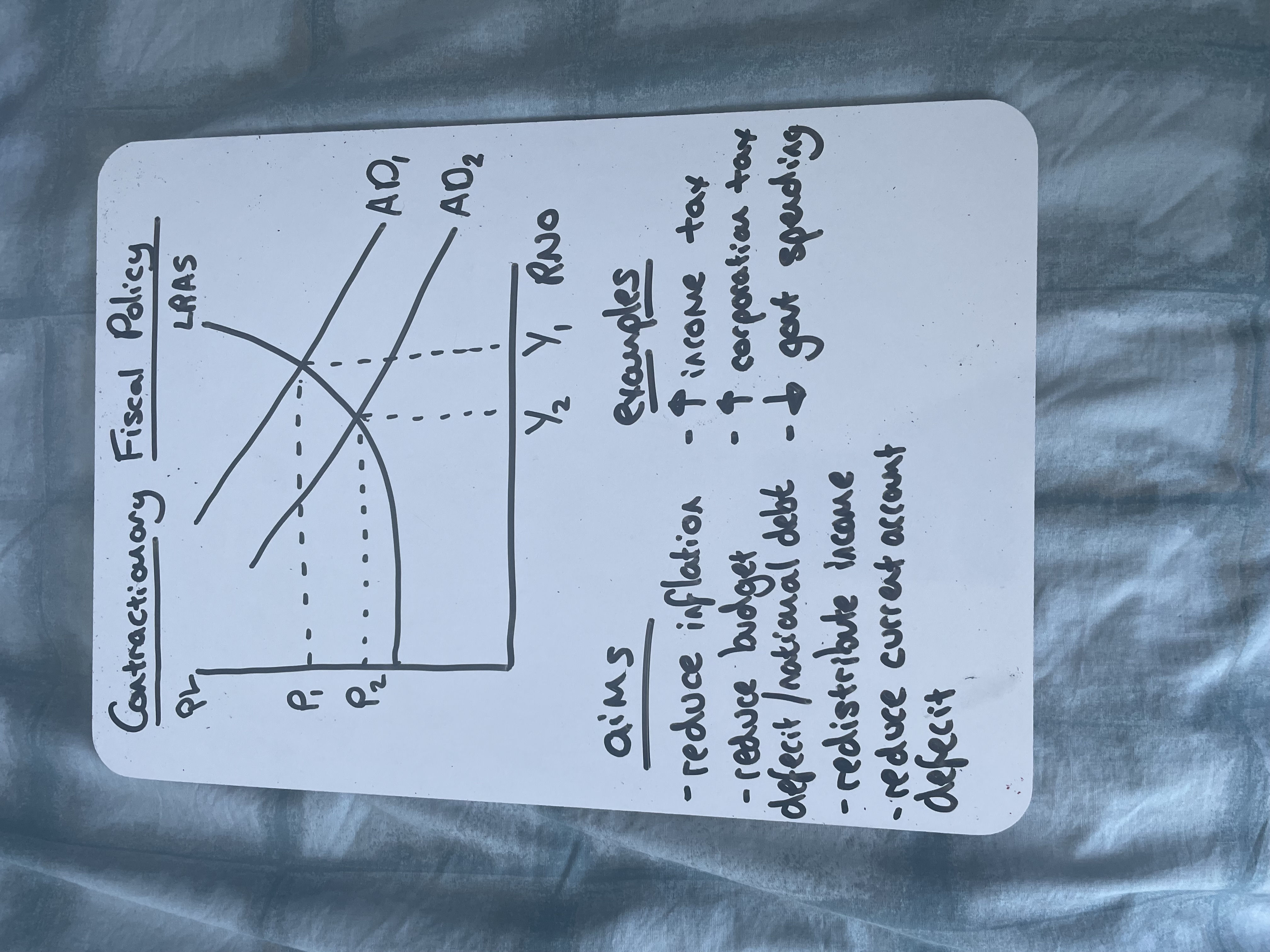13.1 Fiscal Policy
1/33
There's no tags or description
Looks like no tags are added yet.
Name | Mastery | Learn | Test | Matching | Spaced |
|---|
No study sessions yet.
34 Terms
What does fiscal policy involve
The manipulation of government spending, taxation, and the budget balance to influence the economy
What are the two main fiscal policy instruments
Government spending and taxation
What is the macroeconomic function of fiscal policy
To stimulate economic growth and stabilise the economy
What is the microeconomic function of fiscal policy
Targeted spending/taxation to influence specific sectors or address market failures
What is expansionary fiscal policy
Policy to increase AD by raising government spending or reducing taxes
Draw expansionary fiscal policy

What is contractionary fiscal policy
Policy to reduce AD by cutting spending and increasing taxes
Draw contractionary fiscal policy

Disadvantages of expansionary fiscal policy
Worsen budget deficit - increases national debt
Higher interest rates
Can lead to high inflation
Time lag
Disadvantages of contractionary fiscal policy
Can reduce economic growth - leads to unemployment
Worsen inequality
Could lead to a recession
Time lag
Harms business and consumer confidence
How can fiscal policy improve AS
By reducing taxes, subsidising training, increasing education, healthcare and infrastructure spending
How do subsidies for training affect AS
They lower firm costs and increase labour productivity
How can government spending influence the circular flow of icome
By injecting demand into sectors needing stimulation
Which areas receive most UK government spending
Pensions, welfare, health and education
What is capital expenditure
Spending on long-term assets like roads and schools
What is current expenditure
Recurring spending on short-lived goods/services like NHS drugs
What are transfer payments
Welfare payments with no exchange of goods/services (e.g. state pensions)
Why do government engage in public expenditure
To ensure minimum living standards, promote equality and simulate growth
What are the main reasons for taxation
To raise revenue, redistribute income, influence behaviour, correct markets failures
What are direct taxes
Taxes on income or profits paid directly by the individual or firm
What are indirect taxes
Taxes on expenditure (e.g. VAT), usually included in the price of goods
What is progressive tax
A tax where the average rate increases as income increases
What is proportional tax
A tax with a constant rate regardless of income
What is a regressive tax
A tax where lower-income individuals pay a higher proportion of their income (e.g. VAT)
What are Adam Smith’s four canons of taxation
Low collection cost, certainty, convenience, equity
What is the UK’s main source of tax revenue
Income Tax
What is the difference between the budget defecit and national debt
The deficit is the annual gap between spending and revenue; debt is the accumulation of past deficits
What is a cyclical deficit
A temporary deficit caused by economic downturns
What is structural deficit
A persistent imbalance not related to the economic cycle
What is crowding out
Government borrowing reduces private sector investment due to higher interest rates
Why might high national debt be problematic
It can raise borrowing costs and lead to higher taxes or spending cuts
How can national debt affect investor confidence
Excessive debt may require higher interest rates to attract investment
What does the Office for Budget Responsibility (OBR) do
Analyses UK public finances, provide economic forecasts, assesses govt targets
What fiscal targets does the OBR monitor
Balancing the budget in 5 years and reducing net public sector debt